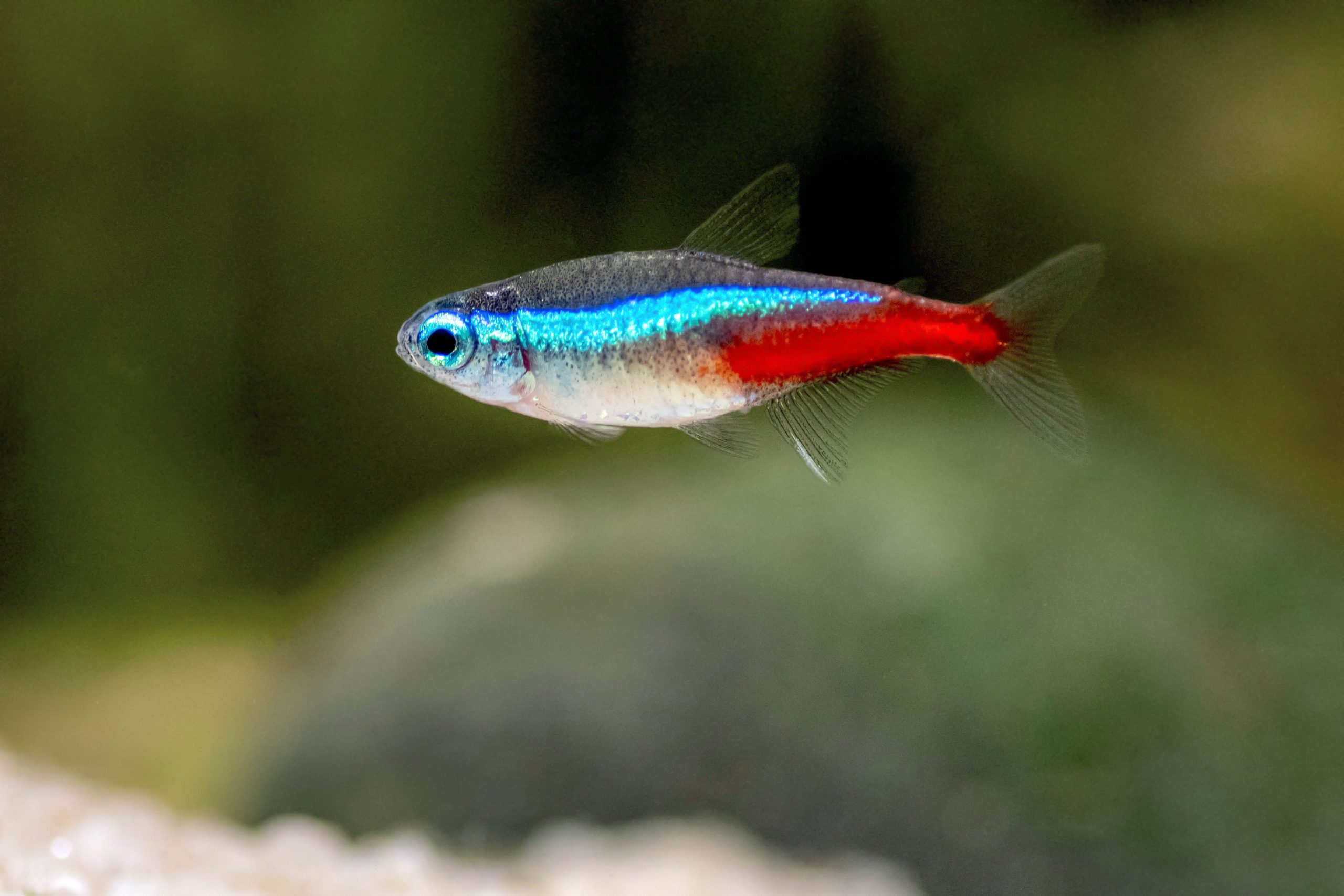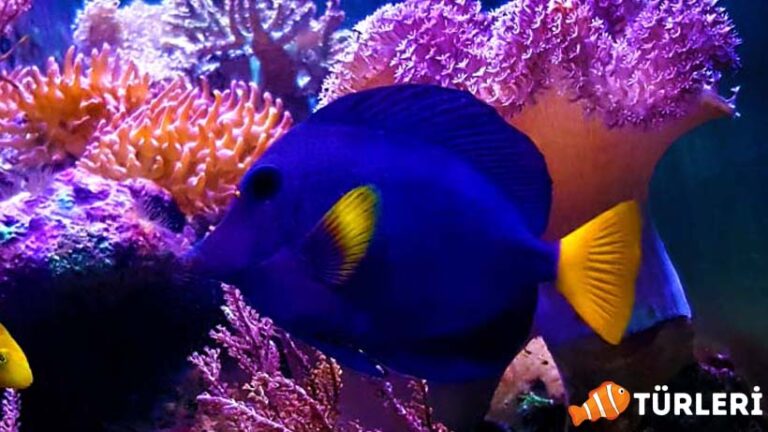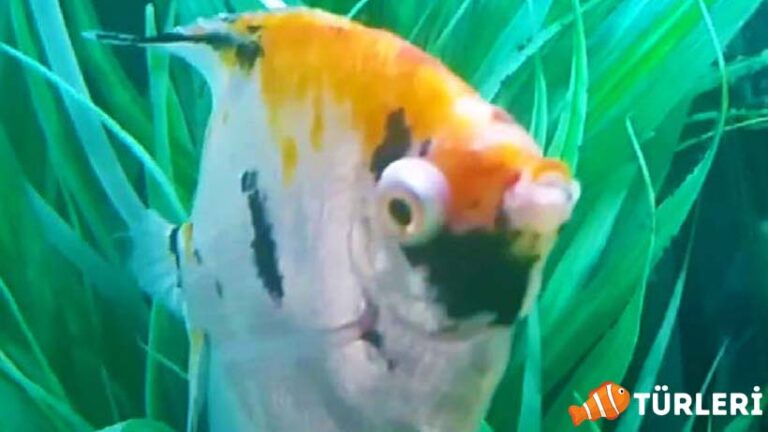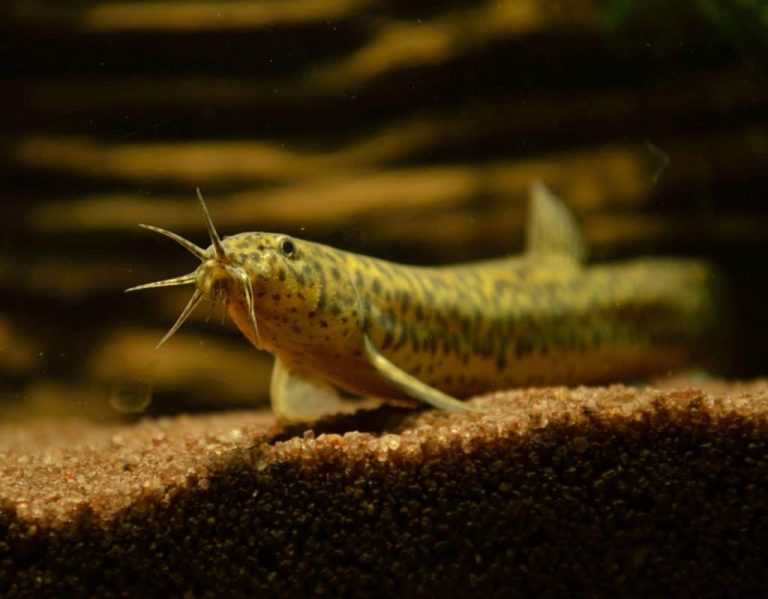Neon Tetra
Neon Tetras are popular aquarium fish known for their bright colors and ease of care. Here are some important aspects to consider for Neon Tetra care:
Neon Tetra Fish Species Summary:
| Scientific Name: | Paracheirodon innesi |
| Origin: | Freshwater sources of South America, particularly the Amazon River basin. |
| Diet: | Omnivore (eats both plant and animal matter; should be fed a balanced diet of flake food, micro pellets, and occasional live or frozen foods). |
| Behavior: | Peaceful, schooling fish. |
| Behavior Towards Their Own Species: | Prefers to be in a group of at least 6-10 of their own kind. |
| Swimming Zone: | Middle |
| Water Temperature: | 22 – 26 °C |
| Water Hardness: | 1 – 10 GH |
| pH Level: | 6.0 – 7.0 |
| Minimum Aquarium Volume: | 38 Liters (10 gallons) for a small school, but larger is better. |
| Adult Size: | 2.5 cm (1 inch) |
| Reproduction: | Egg-layers, but breeding in captivity can be challenging. |
| Lifespan: | 5 – 10 years (with proper care) |
| Care: | Moderate; requires regular water changes, good filtration, and a well-decorated tank with plenty of plants and hiding spots. |
Tank Mates
Neon Tetras are known for their peaceful nature and ability to thrive in community tanks. They have a strong schooling instinct and prefer to be kept in groups of at least 6-10 individuals of their own species. This not only helps in reducing stress but also brings out their best colors and natural behaviors. When it comes to choosing tank mates, it’s important to select other species that are also small and non-aggressive. Cardinal tetras, harlequin rasboras, guppies, and small catfish such as corydoras are all suitable options. It is crucial to avoid keeping Neon Tetras with large or aggressive species like cichlids or large barbs as they can cause stress to the Tetras or even prey on them.
Breeding

Breeding Neon Tetras is a task that requires careful attention to various details, as they have particular water needs and specific breeding behaviors that must be accommodated.
- Water Requirements: Neon Tetras prefer soft and slightly acidic water. The ideal pH range for breeding is 5.0-6.0, and the water temperature should be maintained between 75-80°F (24-27°C). These specific conditions mimic their natural habitat and encourage spawning.
- Breeding Tank Setup: A separate breeding tank is highly recommended to create the optimal environment for spawning. This tank should have dim lighting to replicate the natural, subdued lighting of their native habitat. Additionally, the tank should be heavily planted with fine-leaved plants or moss, which will provide a surface for the eggs to adhere to. The female Neon Tetra will scatter her eggs over the plants, and the male will follow closely behind, fertilizing the eggs as they are laid.
- Filtration: It is advisable to use a sponge filter in the breeding tank. This type of filter provides gentle filtration without the risk of sucking up the eggs or fry, which can be a problem with more powerful filters.
- Spawning Process: Once the breeding pair is introduced into the breeding tank and the optimal conditions are met, the female will start to scatter her eggs on the plants. The male will follow her and release his sperm to fertilize the eggs. It is common for the female to release several hundred eggs during the spawning process.
- Parental Care: Unlike some fish species, Neon Tetras do not provide parental care to their eggs or fry. In fact, they may even eat the eggs if given the opportunity. Therefore, it is recommended to remove the parents from the breeding tank as soon as the spawning process is complete.
- Egg Development: The fertilized eggs are typically transparent and will adhere to the plants in the breeding tank. They will hatch into tiny fry within about 24-48 hours, depending on the water temperature.
- Feeding the Fry: Once the eggs have hatched, the fry will be extremely small and will require very fine food. Infusoria, which are microscopic aquatic organisms, are an excellent first food for Neon Tetra fry. Specially formulated fry food, which is available at most pet stores, is another good option. It is important to feed the fry several times a day but in small quantities to avoid fouling the water.
- Tank Maintenance: Regular water changes and maintenance of the breeding tank are essential to ensure the healthy development of the fry. It is important to remove any uneaten food and debris from the tank and to perform partial water changes regularly. However, care must be taken not to disturb the fry or change the water parameters too drastically.
By paying careful attention to the water conditions, tank setup, and feeding requirements, it is possible to successfully breed Neon Tetras and raise the fry to adulthood.
Disease
Neon Tetras are susceptible to various diseases, including Neon Tetra Disease, Ich, and Fin Rot.
- Neon Tetra Disease: This is a parasitic infection caused by the Microsporidian parasite Pleistophora hyphessobryconis. It is a particularly nasty disease that can be difficult to treat. Symptoms include restlessness, color loss, cysts or lumps on the body, difficulty in swimming, and eventually, the fish may start to lose control over its muscles and spine. Unfortunately, there is no known cure for this disease, and it is usually recommended to euthanize the affected fish to prevent the spread of the disease to other fish in the tank.
- Ich (Ichthyophthirius multifiliis): This is a common protozoan infection that affects many species of freshwater fish. It is often referred to as ‘white spot disease’ due to the characteristic white cysts that appear on the skin, gills, and fins of infected fish. The fish may also exhibit abnormal behaviors such as rapid gill movement, rubbing their body against objects, and reduced feeding. Treatment usually involves raising the water temperature and adding a medication specifically designed to kill the parasite.
- Fin Rot: This is a bacterial infection that affects the fins of the fish. It is often caused by poor water quality and can lead to the fins becoming ragged and frayed. In severe cases, the fins may start to rot away completely. Treatment usually involves improving the water quality and adding antibiotics to the water.
Prevention is always better than cure, and maintaining good water quality, feeding a balanced diet, and quarantining new fish before adding them to the tank can help prevent the onset of these diseases. Regularly monitoring the fish for any changes in behavior, color, or eating habits is also important. If you notice any signs of illness, it is crucial to diagnose and treat the fish promptly to prevent the spread of the disease to other fish in the tank.
Tank Size
For Neon Tetras, a minimum of 10 gallons (38 liters) is recommended for a small school, but a larger tank is always better. A 20-gallon tank or larger is ideal as it provides more space for the fish to swim and helps in maintaining stable water parameters. A larger tank also allows for better filtration and more room for decorations and plants which can help in reducing stress for the fish.
Water Parameters
Neon Tetras thrive in soft, slightly acidic water. The ideal pH range is between 6.0-7.0 and the water temperature should be maintained between 72-78°F (22-26°C). Regular water changes, at least once a week, and good filtration are essential to maintain optimal water quality and to remove harmful substances like ammonia and nitrites. It is also advisable to regularly test the water for pH, ammonia, nitrites, and nitrates to ensure that the water parameters are within the desired range.
Diet
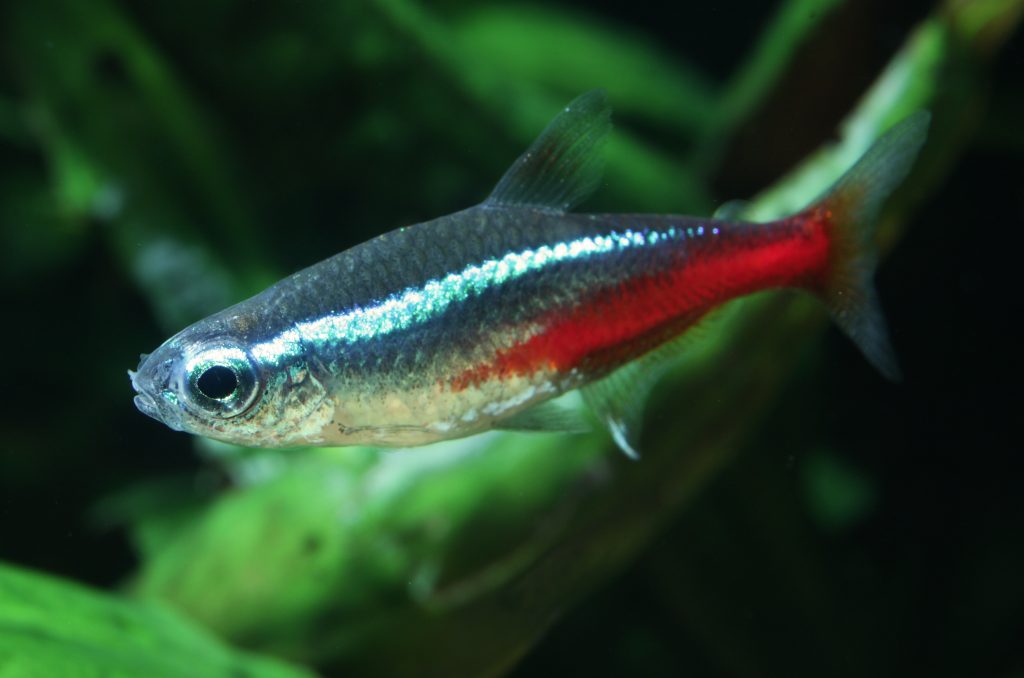
Neon Tetras are omnivores, which means their diet includes both plant and animal matter. A well-balanced and varied diet is crucial for their overall health and wellbeing.
- Base Diet: The staple of their diet should be high-quality flake food and micro pellets specially formulated for small tropical fish. These foods are nutritionally balanced and designed to provide the essential nutrients needed by Neon Tetras.
- Live or Frozen Foods: In addition to the base diet, it is important to provide occasional treats of live or frozen foods such as brine shrimp, daphnia, or bloodworms. These foods are rich in protein and other nutrients and help to keep the fish healthy, vibrant, and active. It is advisable to feed live or frozen foods 2-3 times a week.
- Plant Matter: Although Neon Tetras primarily eat animal matter, they also consume plant matter in their natural habitat. Including small amounts of vegetable matter, such as spirulina flakes or blanched vegetables, in their diet can be beneficial.
- Feeding Frequency: It is important to feed Neon Tetras small quantities of food several times a day, rather than a large amount at once. This ensures that all the fish get enough to eat and helps to mimic their natural feeding behavior. Overfeeding should be avoided as it can lead to poor water quality and health problems for the fish. Any uneaten food should be removed from the tank promptly.
By providing a varied and balanced diet, you can ensure that your Neon Tetras receive all the essential nutrients they need to stay healthy, active, and vibrant.
Decoration
Neon Tetras are naturally shy fish and prefer an environment that closely mimics their natural habitat.
- Plants: A densely planted tank is ideal for Neon Tetras as it provides them with plenty of hiding spots and helps to reduce stress. Plants like Java Moss, Anubias, and Cryptocoryne are suitable choices as they can thrive in the same water parameters as Neon Tetras. Floating plants, such as Water Lettuce or Duckweed, can also be beneficial as they help to dim the light and provide shelter at the surface of the water.
- Hiding Spots: In addition to plants, it is also important to provide other hiding spots such as caves or driftwood. This will give the fish more places to hide and help them feel more secure in their environment.
- Lighting: Neon Tetras are sensitive to bright light, so it is advisable to use subdued lighting in the tank. Floating plants can also help to diffuse the light and create a more comfortable environment for the fish.
By creating a well-decorated tank with plenty of plants and hiding spots, you can help to reduce stress for your Neon Tetras and provide them with a comfortable and natural environment in which to thrive.

